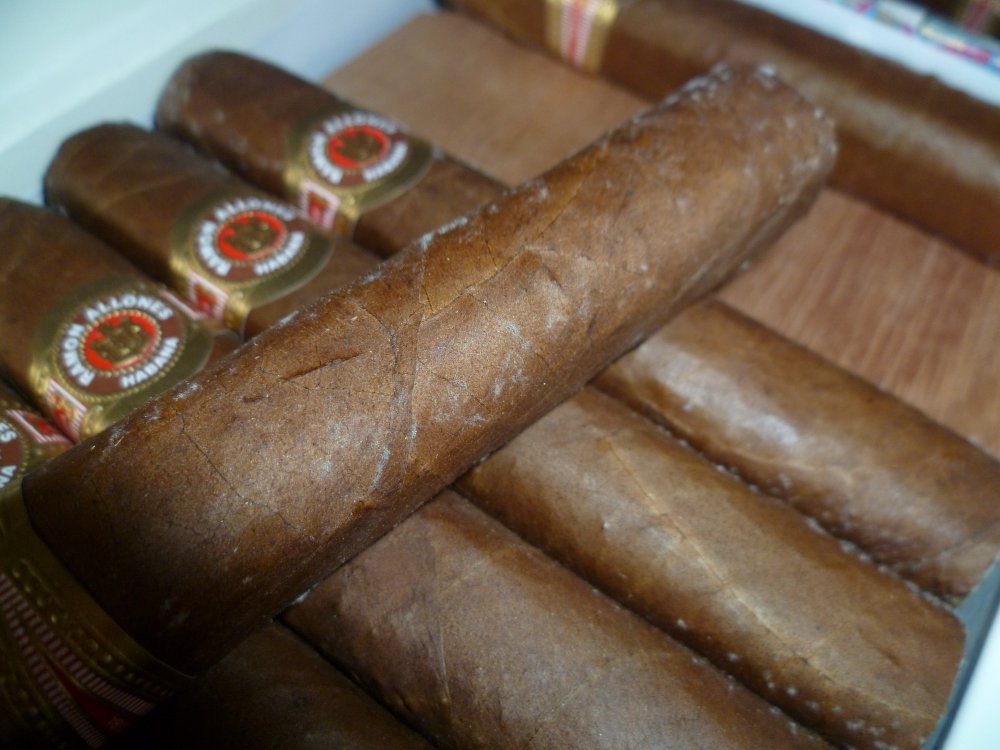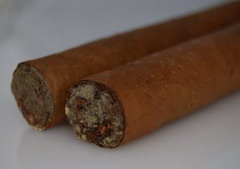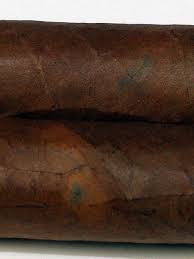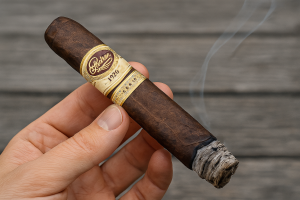Cigar Plume or Mould?

What is Cigar Plume? How to tell the difference between Mould?
One of the biggest questions in the cigar world is, “Is this plume or mould?” Whether you call it plume, ploom or bloom, what is it and how do you tell the difference between it and mould? How can you identify bad types of mould which may occur on your cigars or whether it is safe to smoke a cigar?
What is Plume?
 Plume has become a bit of a legend or a myth in the cigar world; it is seen to be a sign of a well aged cigar. Anecdotally, there are many definitions, including the tobacco oils crystallising to form a thin, white, shiny layer. This is supposedly due to a cigar being stored in the perfect conditions for a long period of time which causes the oils to mature, combine, and seep out of the cigar slightly and then crystalise. There does not however seem to be much clear evidence of this. Many people have therefore tried to myth bust the existence of plume. This is a fairly easy task as the definition includes a clear clue… “crystalises”. Therefore the substance must have a crystal like structure, rather than a fibrous or organic like structure which mould wood have. Unfortunately no evidence of any crystal like substance has been found.
Plume has become a bit of a legend or a myth in the cigar world; it is seen to be a sign of a well aged cigar. Anecdotally, there are many definitions, including the tobacco oils crystallising to form a thin, white, shiny layer. This is supposedly due to a cigar being stored in the perfect conditions for a long period of time which causes the oils to mature, combine, and seep out of the cigar slightly and then crystalise. There does not however seem to be much clear evidence of this. Many people have therefore tried to myth bust the existence of plume. This is a fairly easy task as the definition includes a clear clue… “crystalises”. Therefore the substance must have a crystal like structure, rather than a fibrous or organic like structure which mould wood have. Unfortunately no evidence of any crystal like substance has been found.
So, what is plume and is it harmful?
It seems that plume may in fact be a type of mould - much like bloom which is present on cheeses such as the white fuzzy brie rind. As with cheese bloom, cigar plume does seem to prefer the perfect aging conditions and slowly develops over a long time. It also seems to develop on the oils rather than on or penetrating the actual cigar leaf.
How do I Identify Cigar Plume?
The easiest way to identify plume on your cigar is to look closely at it, if it’s white in colour chances are it is plume. It should also have a small structure (almost crystal like!), and be like a thin dusting over the cigar. As the plume develops on the oils, it should wipe off easily.
What should I do if my cigar is covered in Plume?
Wipe it off and thoroughly enjoy! The best way to clean the plume off your cigar is to use a soft shaving brush, gently dust the cigar in the direction it is rolled, slowly work from head to foot, working in quick, gentle, short brushes being careful not to split the wrapper. Then, light up, smoke and enjoy! Or place the cigar back into your humidor.
What is a bad mould?
 Mould on a cigar is identified by its blue or green tinge, and larger, more clustered structure. Mould is also much harder to wipe off the cigar as it develops on the actual wrapper leaf and will start to breakdown the structure. If you try and wipe it off the cigar, it may remain or take quite a lot of effort to remove. The mould may also develop more on the foot of the cigar – if this is the case, it may be bad news for your cigar.
Mould on a cigar is identified by its blue or green tinge, and larger, more clustered structure. Mould is also much harder to wipe off the cigar as it develops on the actual wrapper leaf and will start to breakdown the structure. If you try and wipe it off the cigar, it may remain or take quite a lot of effort to remove. The mould may also develop more on the foot of the cigar – if this is the case, it may be bad news for your cigar.
What should I do if my cigar is mouldy?
Remove it from your humidor and quarantine! You can try and save your cigar by wiping off the mould as best as possible and then “dry boxing” it separately from your other cigars. To dry box, simply put your cigar in something such as an empty cigar box to lower the humidity and bring down the moisture levels in the cigar. If the mould is on the foot, it may be possible to cut an inch or 2 off the end to save it. Chances are though, it is probably too late for your cigar. Toss it away and reach for another one you’ll definitely enjoy. It may be an idea to check your humidity levels or air out your humidor to ensure the issue does not reoccur.
What causes mould?
Mould is usually caused by 1 or 2 things; too high humidity or temperature, or both. It can also be caused by not regularly opening your humidor to allow fresh, clean air into it. It's also good practice to only take out cigars you are wanting to smoke and try not to put them back in once they've been out with you. Also, wash your hands before your big humidor sort out.
What are the Little Green Spots on My Cigars Wrapper?
 Don’t panic, if your cigar has little green or yellow discoloration spots on the wrapper, this is not mould! These are sunspots or water spots. Light brown or yellow spots are usually caused by a tiny whole in the cover of the shade-grown wrapper leaves, this creates a slight bleaching spot. Green spots are usually small water droplets locking in a bit of colour when the leaf is dried. Neither will affect your cigar in any way and are absolutely nothing to worry about. Smoke your cigars and enjoy!
Don’t panic, if your cigar has little green or yellow discoloration spots on the wrapper, this is not mould! These are sunspots or water spots. Light brown or yellow spots are usually caused by a tiny whole in the cover of the shade-grown wrapper leaves, this creates a slight bleaching spot. Green spots are usually small water droplets locking in a bit of colour when the leaf is dried. Neither will affect your cigar in any way and are absolutely nothing to worry about. Smoke your cigars and enjoy!
Summary
Plume is the sign of a well aged cigar and not a harmful mould, but it is not a crystal substance. The best way to avoid mouldy cigars is to store them in the correct conditions. It also helps to order from a reputable online cigar supplier such as ourselves to guarantee the cigars have previously been stored in the correct conditions as well.















